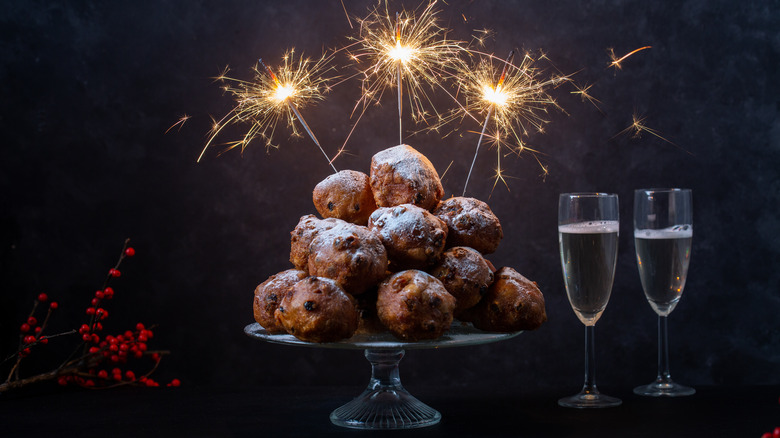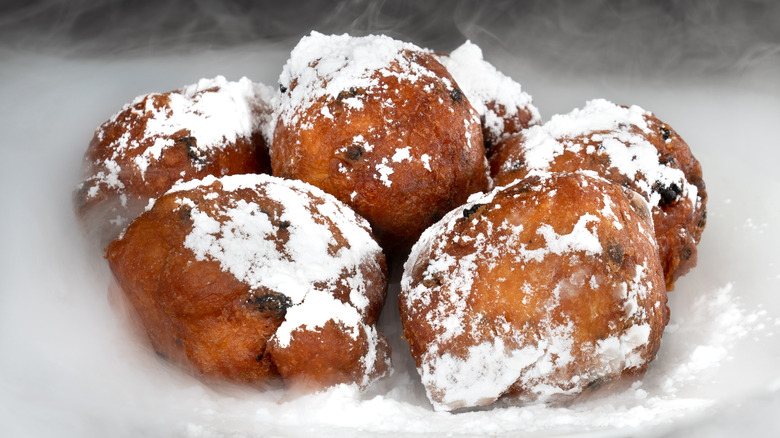The Dough-Like Dumplings The Netherlands Consumes On New Year's
It often feels like you can't get people to agree on much, especially in these trying times. But if there is one exception to that rule, it would be this: everyone seems to love fried dough. From one continent to another, just about every country has its own iteration of the donut. Many Americans will already be familiar with Mexican churros and, if you're from the Midwest, Polish pączki, but these are just the tip of an oil-fried iceberg. Once you discover the full range of international donuts, you'll want to drop whatever you're doing and gobble your way to every corner of our beautiful, doughy world.
Insider highlights the German berliner, a jelly-filled dough ball dusted in powdered sugar; the Iranian zoolbia, made with a yogurt-based dough dipped in sweet syrup; and the Vietnamese bánh rán, a fried ball of rice dough stuffed with jasmine-scented mung bean paste, to name a few. Given our near-universal love of fried dough, it seems like they should play a more significant role in times of celebration. Wouldn't you love to see some donut holes on the Thanksgiving table or a big sack of beignets beneath the Christmas tree? Perhaps Americans could take a cue from the Dutch, who celebrate each New Year with a sort of fried dumpling called oliebollen.
Oliebollen literally means oil balls
Oliebollen are a popular treat in the Netherlands, usually eaten around New Year's. According to Dutch Review, they can also be found in parts of Belgium and Germany, where they go by different regional names, including smoutballen, croustillons, and schmalzkugeln. Per CNN, oliebollen are made by plunging dough balls packed with currants or raisins into boiling oil before dusting them with powdered sugar. Around the winter holidays, Amsterdam is home to numerous oliebollenkraams — pop-up shops that sell oliebollen. Nobody knows just when or where oliebollen were invented, but Dutch Review notes that the snack can be seen in artwork dating back to the 1600s.
There are a few theories about why oliebollen are eaten at New Year's. It was once common for the Dutch to fast between the day of St. Martin (November 11) and Christmas, per the Dutch Review. Paste mentions that the fat content in oliebollen made them perfect for breaking this fast and putting on some warm winter weight. They are also associated with a sinister legend centered on an evil pagan goddess, Perchta. During the 12 days of Christmas, instead of enjoying pear trees and piping pipers, Perchta was said to fly around, slicing open people's stomachs in search of something to eat. Oliebollen were said to be so oily that Perchta's sword would slide right off her victims, leaving them unharmed. The Dutch no longer live in fear of Perchta, but there's no way they're giving up their sweet, sweet oliebollen.

